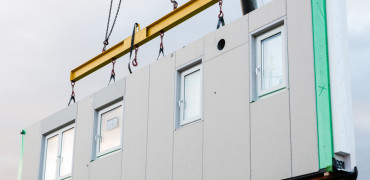The circular economy aims to design out waste in order to increase the wellbeing of both humanity and the environment.
Many designers across all fields are moving from the traditional Take-Make-Dispose economy to one that has a closed loop, where materials, nutrients and data are continuously repurposed.
New tools such as artificial intelligence, the Internet of Things (IoT), and biomimicry mean our design ambitions and constructions are now only limited by our imagination. Creativity has never been more important and a new mindset for business is emerging.
Circular design is creating a circle in which resources are continuously cycled in various forms following a reuse and recycle loop. Resources do not go to waste.
The concept of Circular design goes far beyond the Reduce, Reuse and Recycle theory and aims to maximise total efficiency across all industries.
It is vital that resources remain in a perpetual loop to be used and reused.
Throwaway society
The traditional line of thinking in the construction industry preaches the notion of Make, Break and Discard.
The new circular economy concept goes further expecting more of an industry where everything now will be engineered to be constantly reused or recycled.
It requires a total rethinking of architecture, design, manufacturing, selling, re-using, recycling and consumerism to keep all resources in use and out of the ground for as long as possible and therefore to extract maximum value from each material and building.
Usual business practice sees contractors and the supply chain following the waste hierarchy; reduce, reuse and recycle, to a greater or lesser extent.
But the concept of the circular economy goes further and aims to maximise total material resource efficiency.
Circular economy
By adopting a circular economy in construction there is potential for a huge economic advantage.
The Dutch are leading the race globally and are working rapidly towards becoming a circular economy and Japan has also shown huge success in this area.
Japan has already effectively changed their manufacturing and consumption systems into a more circular and collaborative proposition.
This approach is highly effective and contributes a significant proportion of the GDP whilst employing hundreds of thousands of people.
As the EU have now set ambitious and challenging waste targets the construction industry has to take note.
The proposals ban sending plastics, wood, textiles and food to landfill and therefore the circular economy may be the answer to both our resource and employment challenges.
Perpetual loop
Construction and our urban environment is the single biggest user of materials and generator of waste in the UK.
By effectively dealing with buildings at the end of their life we have the potential to unlock economic value but how that can be unravelled very much depends on how the buildings have been designed and built from the outset.
Design for Deconstruction explores how decisions made at the design stage can increase the possibilities for the quality and quantity of materials that can be re-used at the end of a buildings life.
With globally changes now in demand and over ninety percent of the World’s resources only having a single use, the waste produced represents an enormous pool of resources that are there to be exploited.
It is vital more now than ever that these resources remain in a perpetual loop to be used and reused.
Kirsty Hammond is publisher and editor of Specifier Review



